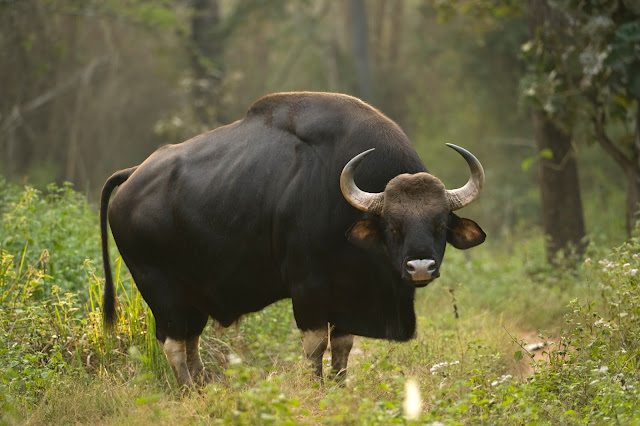Nilgiri Tahr - Endangered Species
As per my previous post of "Bengal Slow Loris", It is a name of species in India that common people even don't know.
So that that, I turn to our safari for those rarest and endangered species that people hardly known their excitant on the Earth.
Today, we talk about "Nilgiri Tahr".
Introduction Part
- The Nilgiri Tahr (Nilgiritragus hylocrius) is also known locally as the Nilgiri Ibex or simply Ibex , is an ungulate that is endemic to the Nilgiri Hills and the southern portion of the Western Ghats in the States of Tamil Nadu and Kerala in Southern India.
- It is a state animal of Tamil Nadu. Despite of its local name , it is more closely related to the sheep of the Orvis genus than the Ibex and wild goats of the Capra genus.
- In Tamil language it is called "varaiaadu" , the term being composed of two Tamil words, wurrai a precipice and aadu, a goat.
Physical Characteristics
- The Nilgiri Tahr is a stocky goat with short, coarse fur and a bristly mane.
- Males are larger than females and of darker colour when mature.
- Both sexes have curved horns, reaching upto 40 cm (16 inch) for male and 30 cm (12 inch) for female.
- Adult males weight 80 to 100 kg and stand about 100 cm tall at the shoulder.
- Adult males develop a light grey area on their backs and are thus called "Saddlebacks".
Habitat and Distribution
- The Nilgiri Tahr inhabits the open montane grassland of the south Western Ghats montane rain forests ecoregion.
- At elevations from 1,200 to 2,500 metres, the forests open into grasslands interspersed with pockets of stunted forests, locally known as sholas.
- These grasslands habitats are surrounded by dense forests at the lower elevations.
- The Nilgiri Tahr formerly ranged over these grasslands in large herds, before but hunting and poaching in the 19th century reduced their population.
Reproduction
- Outside of the breeding season, males gather in bachelor herds on the best grazing areas, building up their strength for the coming rut.
- The rutting season begins with the onset of the monsoon rains at the end of July, and continues for two months throughout the heavy rainfall.
- During courtship, males will wet themselves in their own urine and even decorate their horns with mud and grasses. When two or more males are competing for the attentions of the same female, fights can break out and whilst a sharp head butt may be enough to settle these, well-matched competitors can tussle for hours.
- Females usually give birth to a single young after a gestation period of around 180 days. Nilgiri tahr feed by grazing on the grasses and shrubs of their mountain home.
Conservation
- As few as 100 Nilgiri Tahrs were left in the wild by the early 20th century. Since that time their numbers have increased somewhat; in a comprehensive study of the Nilgiri Tahr population in Western Ghats, the WWF-India has put the population at 3,122.
- Their range extends over 400 km from North to South, and Eravikulam National Park in home to the largest population.
- As per the Wildlife census conducted by Kerala Forest department in association with volunteers college of forestry and Veterinary science, number of animals in Eravikulam National Park has increased by 894 individuals.
- The other significant concentration is in the Nilgiri Hills, with smaller populations in the Anamalai Hills, Periyar National Park, Palni Hills and other pockets in the Western Ghats south of Eravikulam, almost to India's southern tip.
- IUCN Red List : Endangered (2008)
- CITES Listing : Not listed (2017)






Comments
Post a Comment